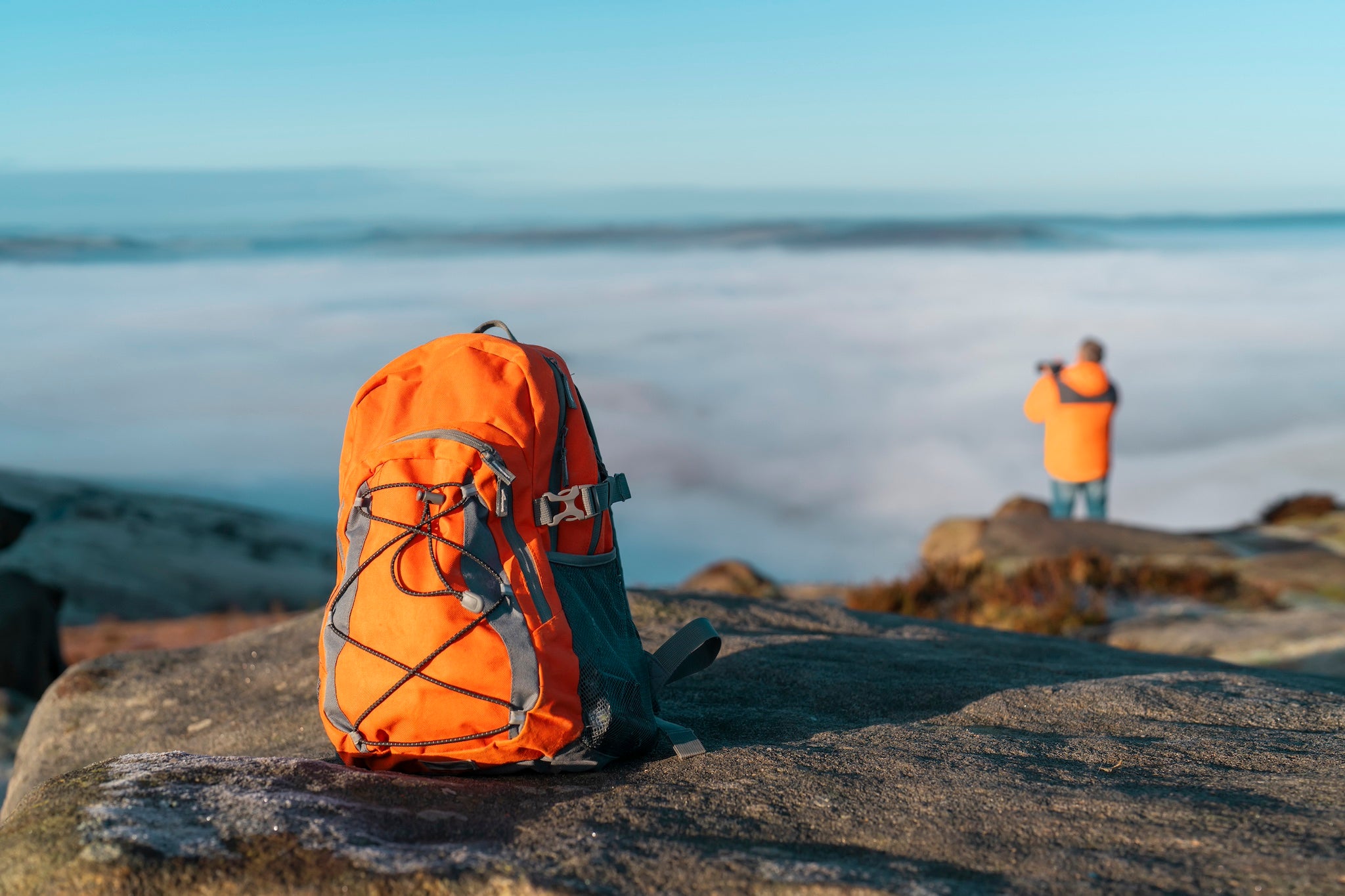Rucking is the fitness trend that’s here to stay – here’s why you should try it
Rucking can help you build strength and boost your fitness, all from a simple stroll

The rucking revolution is well underway, and it already has some heavy hitters in the fitness space singing its praises; podcaster and biohacker Andrew Huberman regularly rucks on Sundays, and longevity expert Peter Attia is a long-time fan.
Unlike other fitness crazes, rucking is refreshingly simple too: all you have to do is wear a backpack with a fair amount of weight to it and go for a walk.
The origins lie in the military, but in recent years more of us regular folk have adopted rucking as an easy way to squeeze some extra exercise into the day. The logic is that, by adding weight, you increase the intensity of your regular walk while also achieving a bonus strength-boosting stimulus.
To get the low-down on this rising fitness phenomenon, we spoke to Nichele Cihlar, director of training at rucking specialists GoRuck, and Dr Elroy Aguiar, assistant professor of exercise science at The University of Alabama. Here’s everything you need to know.
What is rucking?
“Rucking has a very simple definition: it’s basically just walking with weight on your back,” says Cihlar. “We like to make a lot of fitness modalities complicated and confusing, especially with social media these days, but rucking is actually very simple.”
Seasoned rucking veterans will do this with purpose-built weight plates slipped inside specially-designed rucksacks (£365, Goruck.eu), but if you’re just starting out you can use any comfortable backpack with a few fairly heavy items inside.
Is rucking good for you?
The primary appeal of rucking is its accessibility. Whether you only have 20 minutes for a quick stroll at lunchtime or you want to upgrade your incidental steps throughout the day, you can make these activities into more of a workout by wearing a weighted rucksack.
“Rucking can be for almost anyone, especially if you’re someone who’s new to fitness and you want to get into something that isn’t in a gym full of people,” says Cihlar. “It’s a way to amplify your walk and add that resistance training element without putting a lot of extra strain on your joints or needing a personal trainer teaching you what to do. You simply put the ruck on and go out for a walk.”
Though it might sound obvious, adding weight to your walk will increase the difficulty, which can lead to elevated calorie burn and cardiovascular fitness benefits.
“You’re carrying extra weight, and that extra weight costs you energy to move,” explains Dr Aguiar. “It’s going to increase your oxygen consumption and your heart rate if you’re trying to maintain the same speed of walking.”
Does rucking build muscle?
Challenging your body to support more load can provide a strength-building stimulus too, especially when you’re carrying heavier weights – not to the same extent as a dedicated strength training session, but more so than a standard walk.
“It’s a lower body activity, so the quadriceps, hamstrings and gastrocnemius [muscles in the thigh and calf] are going to have to accommodate that heavier load, and you would get small improvements [in strength and bone density], especially if you do it over a prolonged period of time,” says Dr Aguiar. And it’s not just your lower body that will reap the rewards.
“Rucking helps develop those postural muscles in your upper back, which is great when we spend so much time hunched forward, at the computer, driving or on our cellphones,” Cihlar adds. “It also helps develop your core strength because you’re holding that weight on your shoulders.”

What to use as a weight for rucking
Cihlar says the normal weight she recommends for rucking is “30lb for males and 20lb for females” (the closest UK equivalents tend to be 15kg and 10kg respectively). But finding the right weight for you will come down to a few different factors, such as your fitness level and age.
“That is not always a starting point for everyone, so you can scale it up or down to suit you,” she says. “You can literally start with any backpack and put some weight in it, which can be your water bottle, some magazines, your snacks, whatever, then work your way up.”
When you’re doing this, Dr Aguiar says moderate progression is key, recommending you increase the weight you’re carrying gradually over time.
“If you took a sedentary person, put a 20kg backpack on them, then told them to walk 8,000 steps a day, it probably won’t be super harmful but it could be too quick of a progression for them,” he says. “It may also increase factors like joint pain, especially if they have things like osteoarthritis or other musculoskeletal conditions, so you just have to be a little bit careful in that regard.”
Alternatively, if you’re a rucking veteran or seasoned strength training fan, you might want to increase the weight you’re carrying to create more of a challenge for yourself. For this, it’s you’ll want a rucking backpack with padded straps and compartments designed to hold custom-built weight plates in a comfortable position.
“For me, if I was generally going for a walk, I would just keep a 20lb plate in there,” says Cihlar. “”But if I want to make it more challenging for myself I’ll use a 30lb (13.6kg) or 45lb (20kg) plate and push myself to go a harder distance. That’s not when I’m just walking the dogs, that’s when I want to get a really good workout and challenge myself.
“We also make our Ruckers so they can hold two plates, so if you’re a heavy hitter and you’re training for a hike that you’re doing, you can put two plates in that ruck and bump it up to 60lb (27kg) or 75lb (34kg).”
Essentially, you need to find a weight that works for you. The weight you’re carrying should feel challenging and elevate your heart rate, but not to the point you can’t hold a conversation while carrying it.
How to start rucking
The learning curve for rucking is considerably shallower than most other forms of exercise – there’s no real skill to master, you just need to walk.
“I’m sure most people have gone to school and carried a backpack,” Cihlar says. “This is really no different, but now you’re making it an exercise rather than a daily activity.”
“Just be mindful. As with any fitness regimen, you don’t want to jump to the heaviest weight straight away, or go from not doing it at all to doing it every day. Build it up so it’s sustainable for you.”
She also recommends investing in a sturdy, comfortable pair of shoes, and investing in a proper rucking backpack when you’re hauling loads of 10lb or more.
Beyond this, all you need to do is sling a rucksack over your shoulders and start walking. So if that sounds like it could be your cup of tea, what are you waiting for? Step to it!
Read more: Best men’s walking boots and shoes 2024, tried and tested on winter hikes




Join our commenting forum
Join thought-provoking conversations, follow other Independent readers and see their replies
Comments